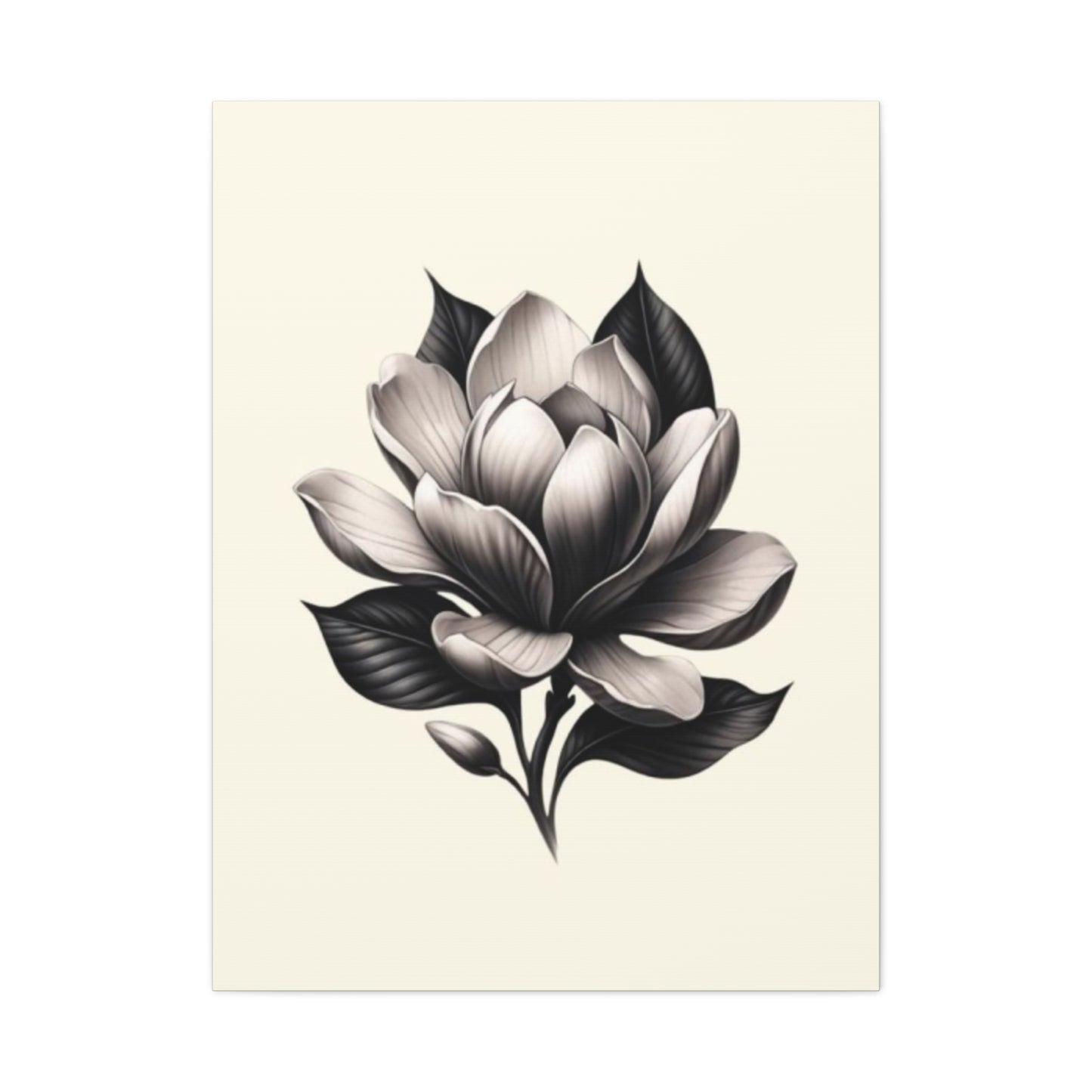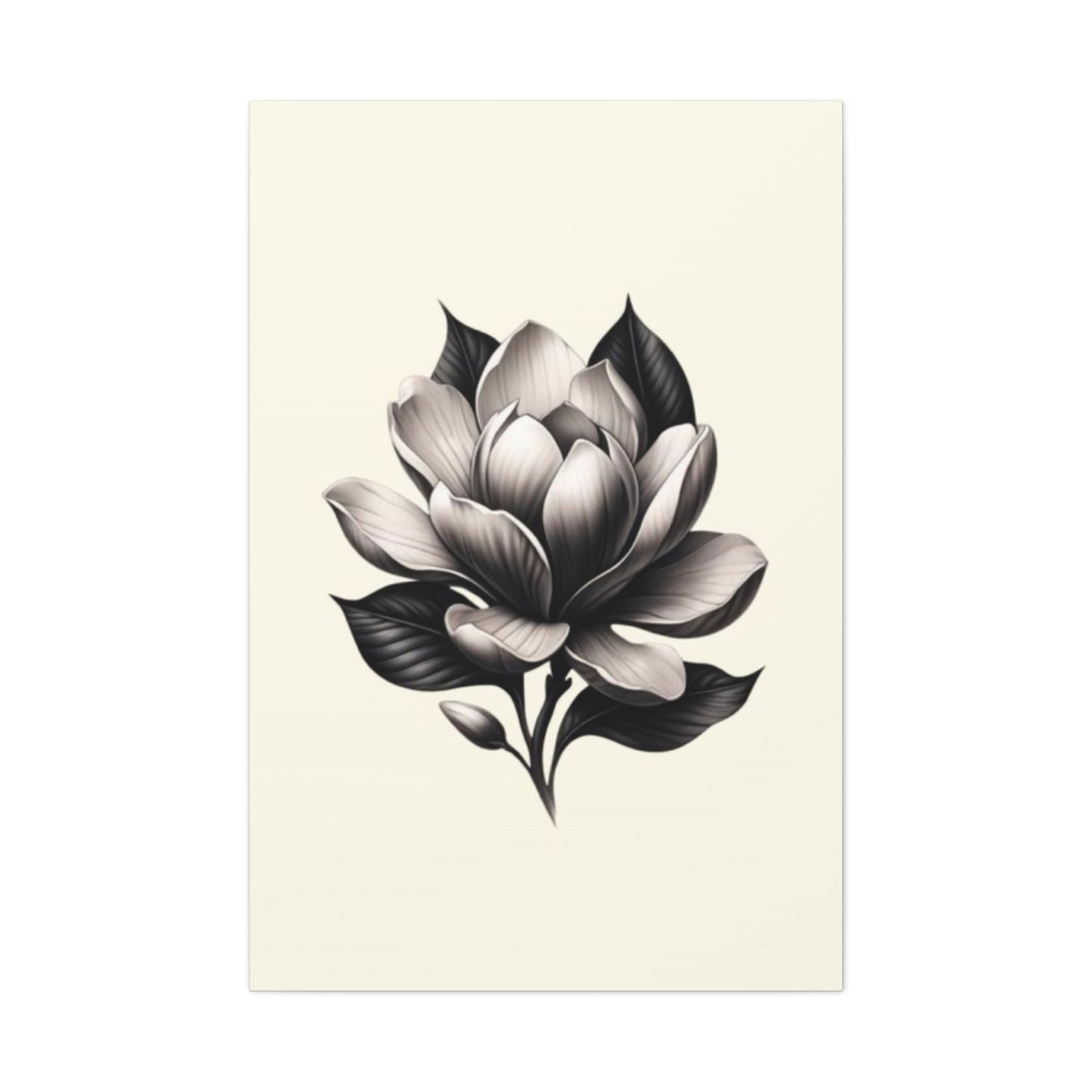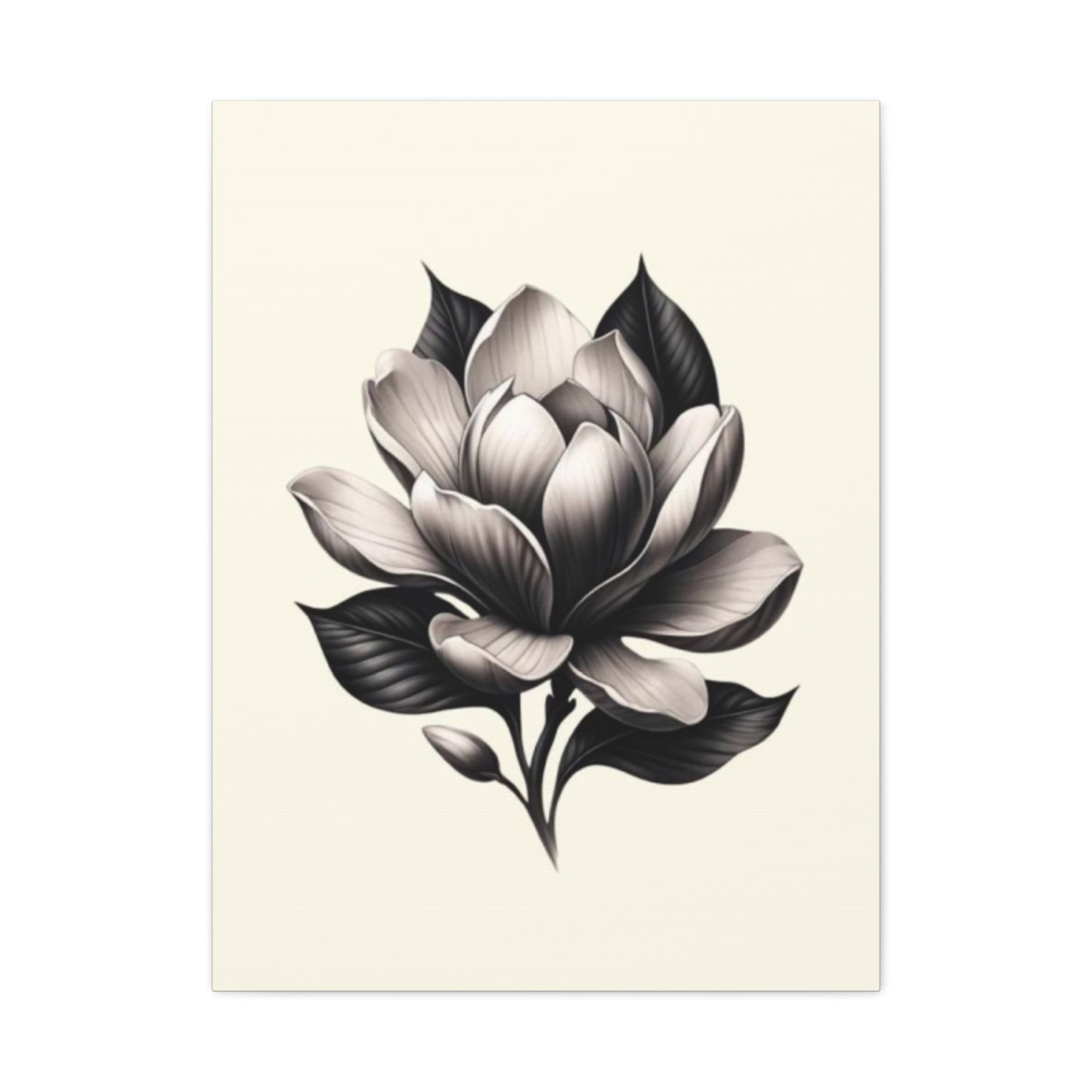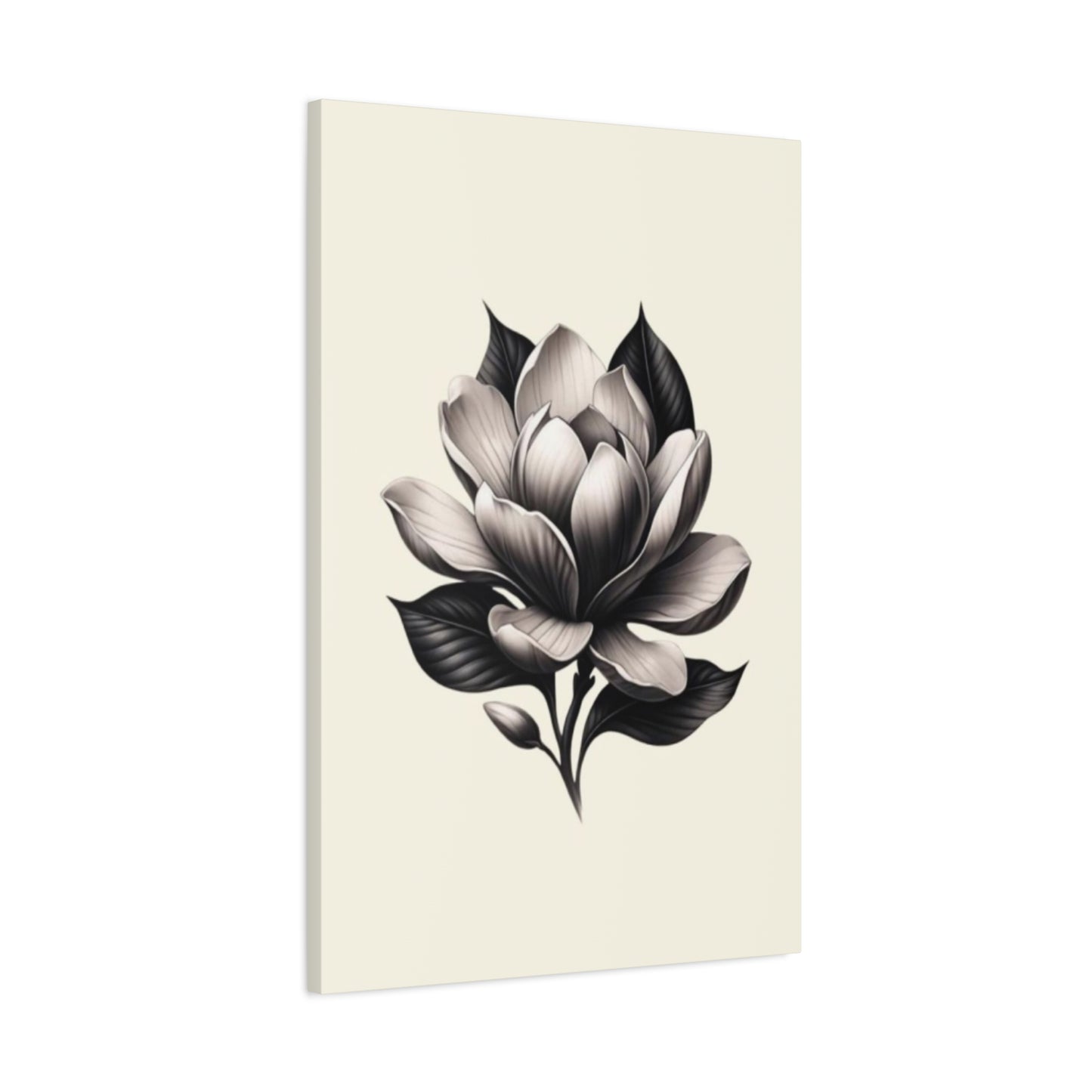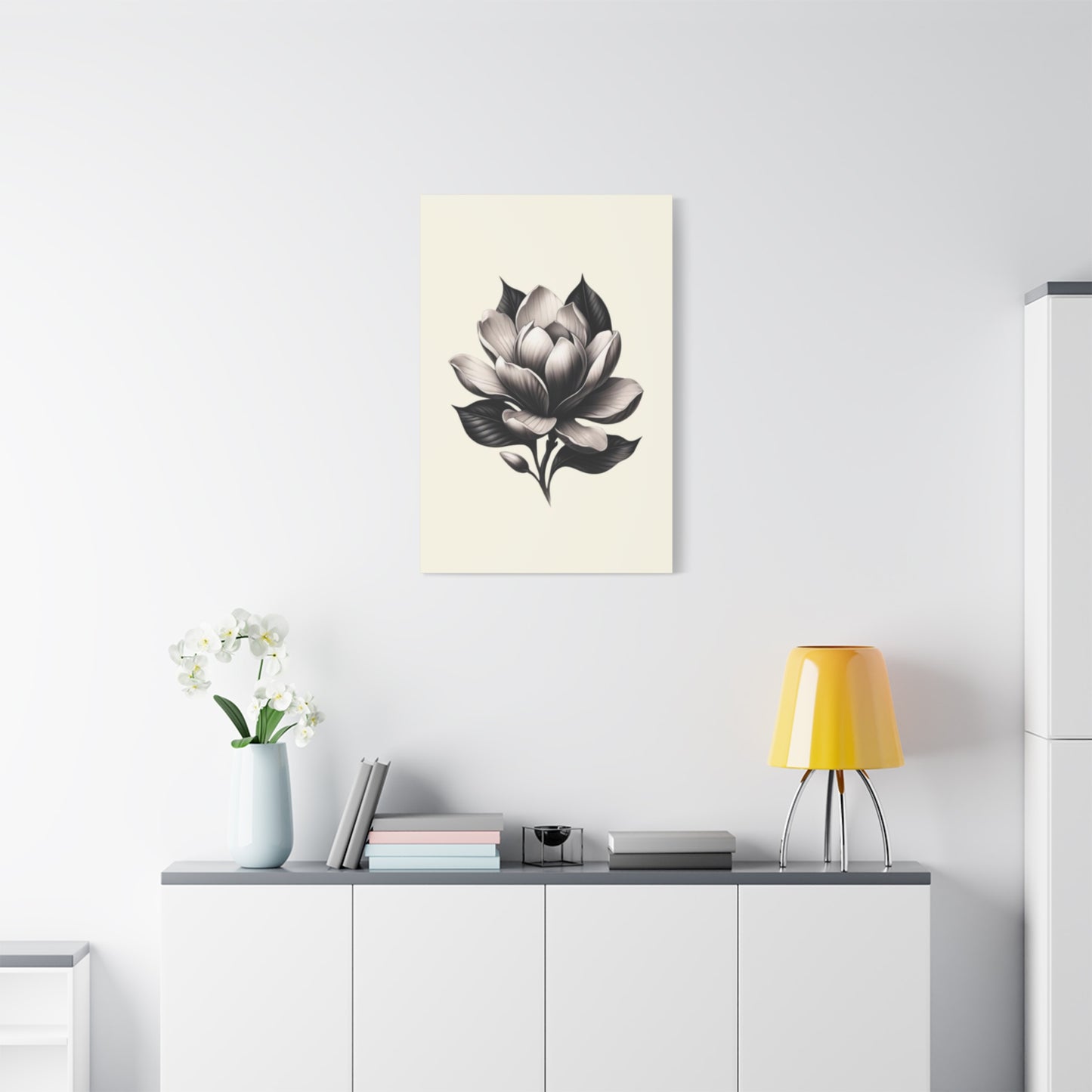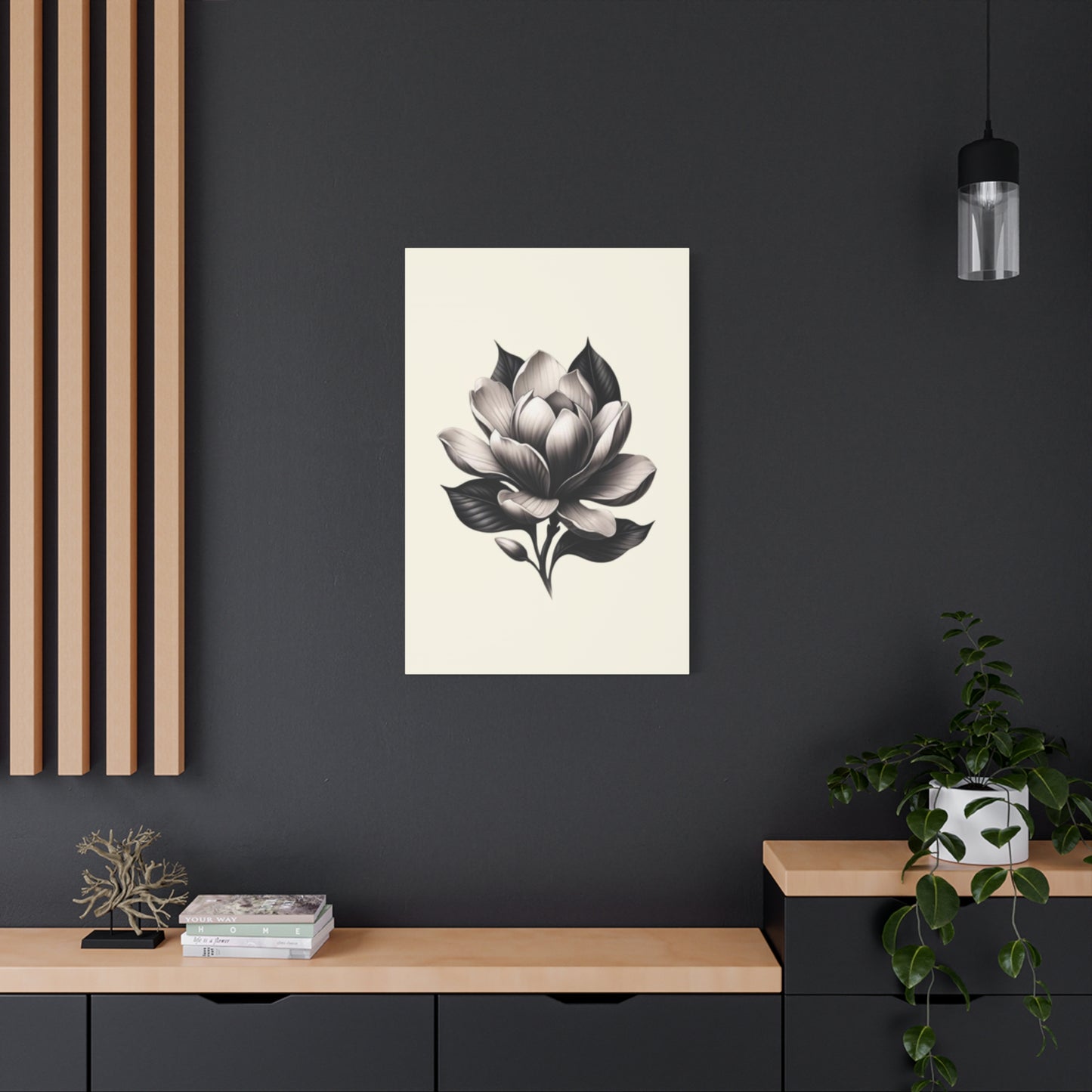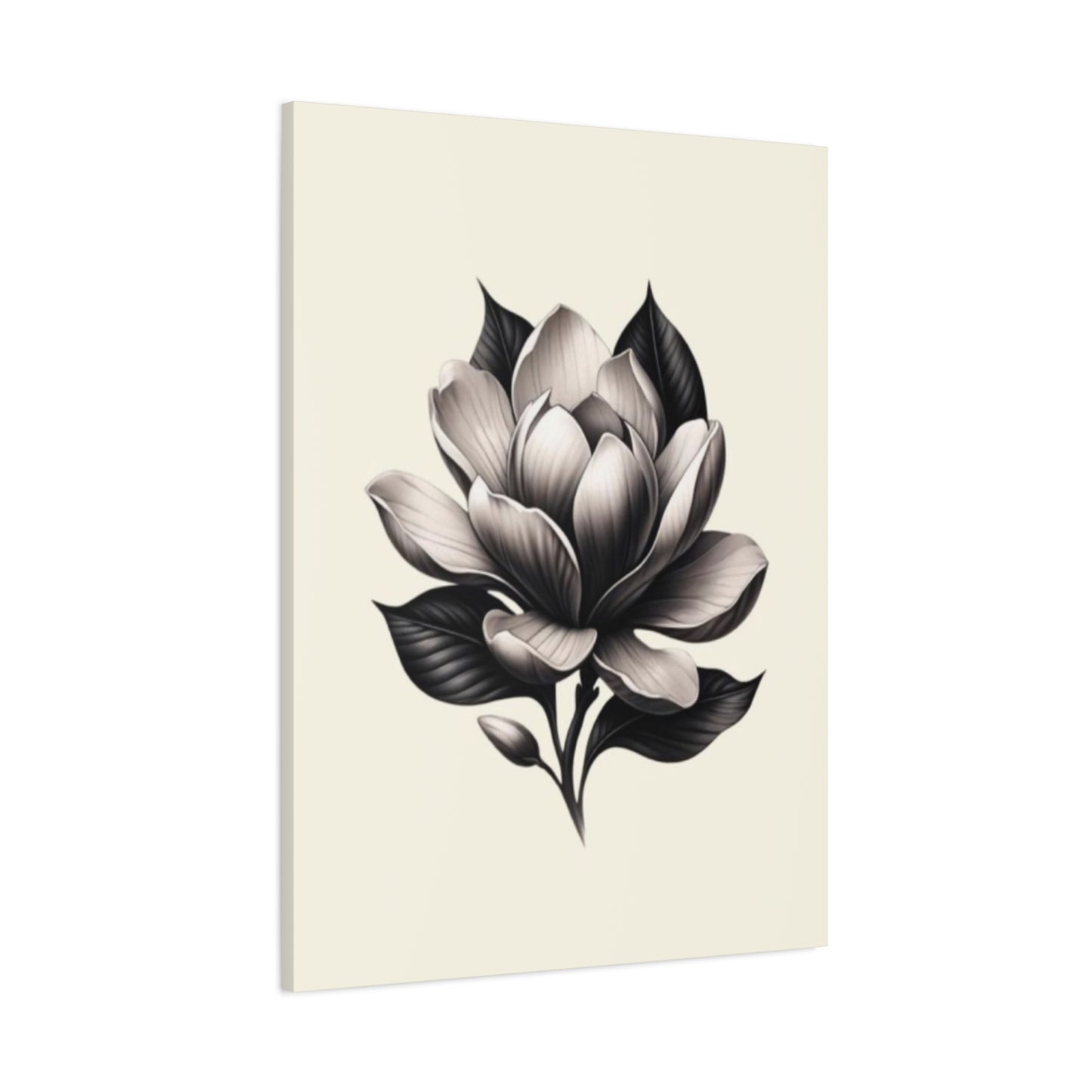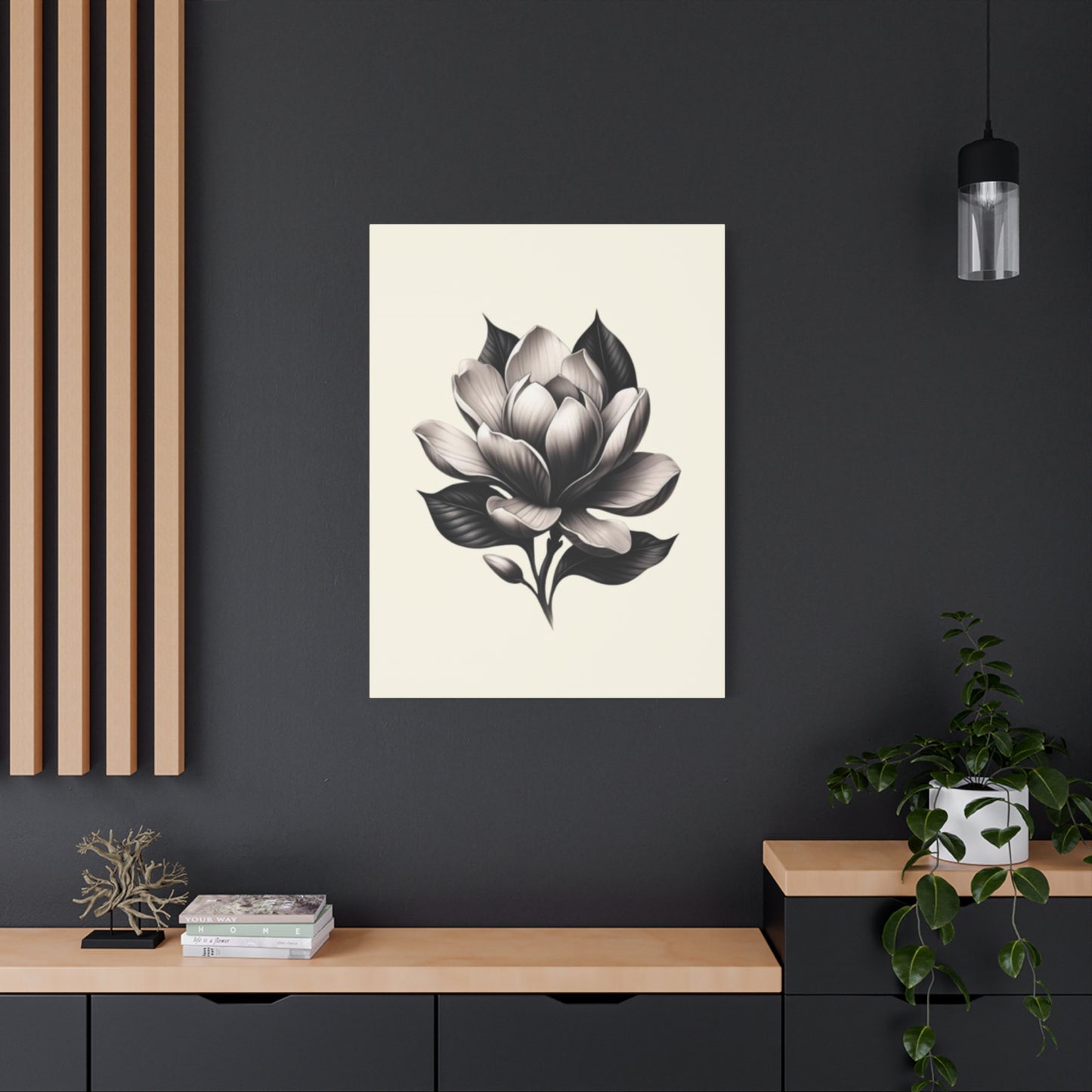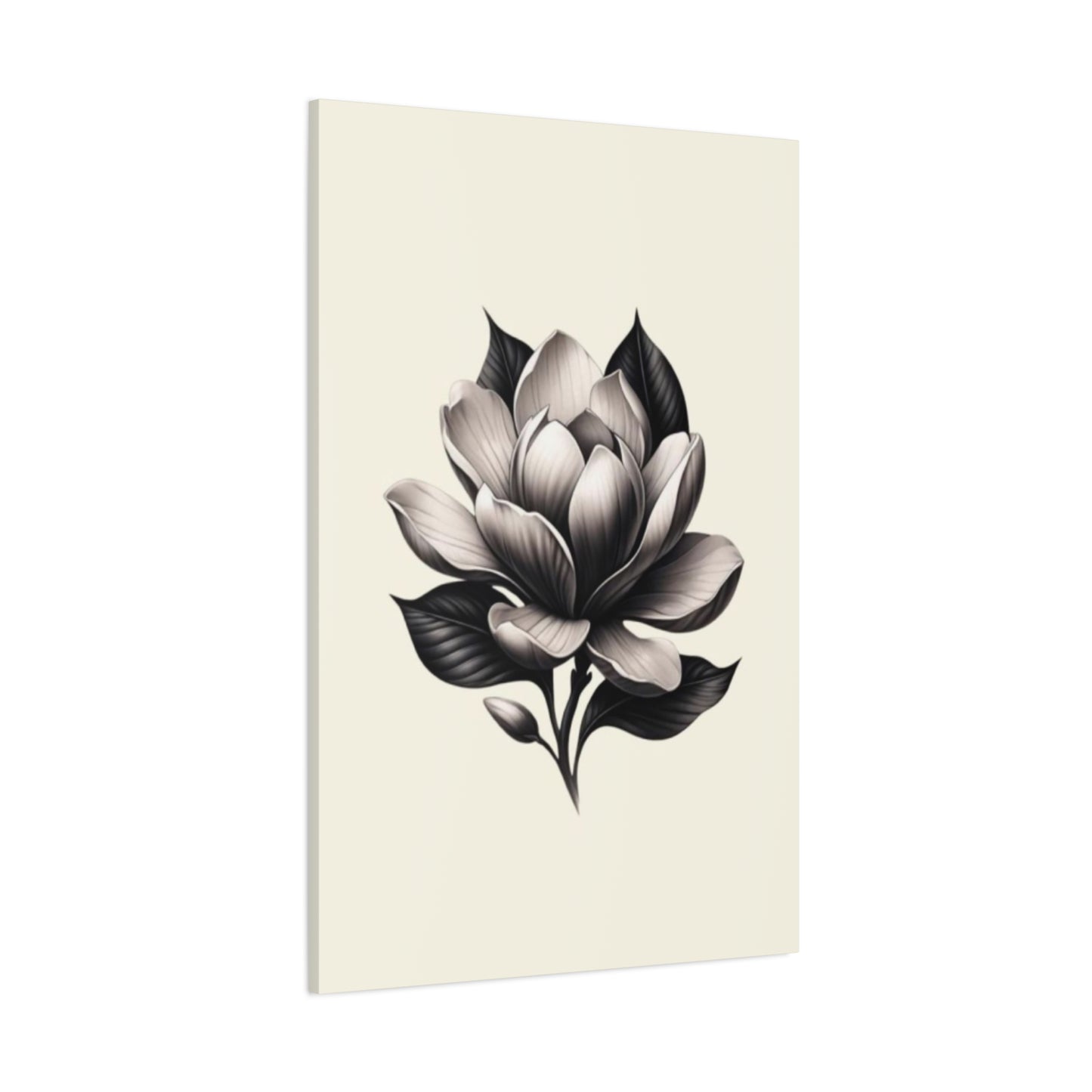Nature’s Masterpiece: Yellow Magnolia Flower Paintings Wall art for Elegant and Timeless Décor
The world of interior design has witnessed a remarkable resurgence in botanical artwork, with yellow magnolia flower paintings emerging as a captivating choice for homeowners and design enthusiasts seeking to infuse their living spaces with natural beauty and sophisticated charm. These stunning artworks combine the delicate grace of magnolia blossoms with the uplifting energy of yellow tones, creating visual masterpieces that transform ordinary walls into extraordinary focal points.
Magnolia flowers have long held a special place in art history, symbolizing purity, dignity, and perseverance. When rendered in vibrant yellow hues, these botanical subjects take on additional meanings of joy, optimism, and intellectual energy. The combination creates artwork that speaks to both the heart and mind, offering viewers a daily dose of natural inspiration while complementing various interior design schemes.
Contemporary artists and traditional painters alike have embraced yellow magnolia blooms as subjects worthy of detailed study and artistic interpretation. From realistic oil paintings that capture every petal's subtle texture to abstract watercolor pieces that suggest the flower's essence through flowing colors and forms, yellow magnolia artwork spans an impressive range of styles and techniques. This versatility ensures that regardless of your personal aesthetic preferences or existing decor, you can find a yellow magnolia painting that resonates with your vision.
The appeal of these botanical artworks extends beyond their obvious visual beauty. Yellow magnolia paintings serve multiple functions within a home environment. They act as conversation starters, drawing guests into discussions about art, nature, and design. They provide visual rest areas where the eye can pause and appreciate beauty amid the busy patterns and textures that often dominate modern interiors. Additionally, they contribute to the psychological atmosphere of a space, with their warm yellow tones promoting feelings of happiness, creativity, and mental clarity.
Choosing wall art for your home represents a significant decision that impacts your daily environment and emotional well-being. Unlike furniture or accessories that might be replaced frequently, quality artwork often becomes a long-term companion in your living space. Yellow magnolia flower paintings offer enduring appeal that transcends fleeting design trends, rooted as they are in the timeless beauty of nature and the universal human appreciation for floral forms.
The Historical Significance of Magnolia in Artistic Expression
Magnolia flowers have captivated artists for centuries, appearing in artistic works across multiple cultures and time periods. These ancient blooms, which existed before bees evolved and are therefore pollinated by beetles, carry a prehistoric mystique that adds depth to their artistic representation. In Asian art traditions, particularly Chinese and Japanese painting, magnolia blossoms have been revered subjects for over a thousand years, often depicted alongside other symbolic flowers in elaborate compositions celebrating the changing seasons.
During the Song Dynasty in China, magnolia flowers became prominent subjects in literati painting, where scholar-artists would render these blooms with elegant brushstrokes that captured both their physical beauty and spiritual essence. These artists developed sophisticated techniques for depicting the magnolia's distinctive petal structure, with its thick, waxy texture and graceful curves. The tradition continued through subsequent dynasties, with each generation of artists bringing fresh perspectives to this beloved subject.
Japanese artists similarly embraced magnolia imagery, incorporating these flowers into woodblock prints, screen paintings, and decorative arts. The Japanese aesthetic sensibility, with its emphasis on simplicity, asymmetry, and natural beauty, found perfect expression in magnolia compositions. Artists like Hokusai and Hiroshige included magnolia branches in their seasonal prints, while contemporary Japanese painters continue exploring this subject through both traditional and modern techniques.
Western artists discovered the artistic potential of magnolias somewhat later, but with equal enthusiasm. When magnolia trees were introduced to European gardens in the eighteenth century, they quickly captured the imagination of botanical illustrators and fine artists alike. Victorian-era painters incorporated magnolias into still life compositions and garden scenes, appreciating both their sculptural flowers and glossy foliage. The flowers' exotic origins added an element of worldliness and sophistication to these artworks.
In American art, magnolias hold special significance, particularly in the Southern states where these trees thrive. Artists like Georgia O'Keeffe brought their unique vision to magnolia painting, creating dramatic close-up views that transformed familiar flowers into abstract landscapes of form and color. Her approach influenced generations of subsequent artists who continue exploring the intersection between botanical accuracy and artistic interpretation.
The tradition of yellow magnolia painting specifically draws on all these historical precedents while adding its own distinctive character. Yellow magnolia varieties, though less common in nature than white or pink types, offer artists a palette that combines warmth with sophistication. The golden and butter yellow tones available in cultivars like Magnolia acuminata provide rich material for artistic exploration, allowing painters to work with color ranges that evoke sunlight, optimism, and natural vitality.
Botanical Characteristics That Make Magnolia Ideal for Artistic Representation
Magnolia flowers possess distinctive botanical characteristics that have made them perennial favorites among artists seeking compelling natural subjects. Understanding these features helps explain why magnolia paintings, particularly those featuring yellow varieties, create such striking visual impact and why artists return to this subject repeatedly across different styles and mediums.
The magnolia blossom's size immediately sets it apart from most other flowers. Depending on the species and cultivar, magnolia flowers can range from three inches to over twelve inches in diameter, with some varieties producing blooms that rival dinner plates in scale. This substantial size translates beautifully to painted representation, allowing artists to create detailed, impactful compositions without needing to cluster multiple small blooms. A single yellow magnolia flower can command an entire canvas, providing sufficient visual interest and complexity to sustain viewer attention.
Petal structure in magnolia flowers offers remarkable variety and visual interest. Most magnolia species display thick, waxy petals arranged in multiple rows or whorls, creating a sculptural quality that challenges artists to capture dimensionality on flat surfaces. The petals often exhibit subtle curves and overlaps, with younger flowers showing tight, compact arrangements that gradually open into more relaxed, spreading forms. This structural complexity provides artists with opportunities to demonstrate technical skill in rendering form, shadow, and spatial relationships.
The texture of magnolia petals presents another compelling characteristic for artistic exploration. Unlike delicate flowers with tissue-thin petals, magnolia blooms have substantial, almost leathery petals with a distinctive waxy coating that creates unique light-reflecting properties. This texture produces highlight patterns that differ from other flowers, with glossy surfaces catching light in ways that create dramatic contrasts between illuminated areas and shadows. Artists working in realistic styles must carefully observe and render these textural qualities to achieve convincing representations.
Yellow magnolia varieties offer particularly interesting color characteristics that expand artistic possibilities. The yellow in magnolia flowers ranges from pale cream-yellow through butter yellow to deep golden tones, often with color variations within a single bloom. Individual petals might show gradations from darker bases to lighter tips, or display subtle shifts in hue that create visual complexity. Additionally, yellow magnolias may show color changes as flowers mature, providing artists with multiple color stories within a single subject.
The magnolia's reproductive structures, visible at the flower's center, add another layer of visual interest. The prominent pistils and stamens, often contrasting in color with the petals, create focal points within the bloom and provide opportunities for detail work that demonstrates artistic precision. In yellow magnolias, these central structures might appear in complementary purple-brown tones or harmonious cream colors, creating color relationships that artists can emphasize or subdue depending on their compositional goals.
Magnolia foliage contributes significantly to the artistic appeal of these subjects. The large, glossy leaves, typically dark green with prominent veining, provide dramatic contrast to the lighter flower colors. In compositions including both blooms and foliage, artists can explore relationships between complementary colors, particularly the yellow-green combinations that create vibrant, naturalistic effects. The leaves' smooth, reflective surfaces present their own technical challenges and opportunities, requiring careful attention to highlight and shadow patterns.
Branch structure in magnolia trees offers compositional elements that artists have exploited for centuries. Magnolia branches tend toward interesting angles and curves, with smooth, often silvery bark that contrasts with both flowers and foliage. Artists can use these structural elements to create dynamic compositions that lead the viewer's eye through the painting, or to frame and emphasize individual blooms. The branches' organic curves provide counterpoints to the geometric patterns within the flowers themselves.
Contemporary Artistic Approaches to Yellow Magnolia Representation
The contemporary art world embraces yellow magnolia subjects through diverse stylistic approaches, each offering unique perspectives on these beloved flowers. Modern artists bring fresh techniques, materials, and conceptual frameworks to magnolia painting, creating works that range from photorealistic precision to abstract interpretation. This stylistic diversity ensures that collectors and decorators can find yellow magnolia artwork that aligns perfectly with their aesthetic preferences and interior design visions.
Photorealistic or hyperrealistic approaches to yellow magnolia painting have gained significant popularity in recent decades. Artists working in this style employ meticulous techniques to create paintings that rival or exceed photographic accuracy. These works celebrate technical virtuosity while inviting viewers to see familiar flowers with enhanced clarity and attention. Photorealistic yellow magnolia paintings often focus on single blooms or small clusters, allowing for intensive detail work that captures every petal curve, every subtle color transition, and every textural nuance. The resulting artworks function almost like scientific illustrations while maintaining undeniable aesthetic beauty.
Impressionistic interpretations of yellow magnolias continue the tradition established by nineteenth-century masters who revolutionized how artists approached natural subjects. Contemporary impressionists working with yellow magnolia themes employ loose brushwork, broken color, and attention to light effects to create paintings that capture the essence and feeling of magnolia blooms rather than precise details. These works often convey the atmospheric conditions surrounding the flowers, suggesting spring breezes, warm sunlight, or dappled shade. The impressionistic style works particularly well for yellow magnolias, as the loose handling of paint can create luminous effects that enhance the flowers' natural radiance.
Abstract approaches to yellow magnolia subjects push beyond representational boundaries to explore color, form, and emotion. Abstract artists might reduce magnolia flowers to essential geometric shapes, use magnolia-inspired color palettes without depicting recognizable flowers, or create gestural works that express the feeling of encountering yellow magnolias without literally illustrating them. These paintings appeal to viewers who appreciate art that suggests rather than describes, leaving space for personal interpretation and emotional response. Abstract yellow magnolia works can be particularly effective in contemporary interiors where they complement minimalist or modern design schemes.
Mixed media techniques have opened new possibilities for yellow magnolia representation. Artists combine traditional painting with collage elements, textured materials, gold leaf, or digital components to create layered, complex works that engage viewers on multiple sensory levels. Some mixed media yellow magnolia pieces incorporate actual botanical elements like pressed flowers or leaves, blurring boundaries between representation and presentation. Others use unconventional materials like fabric, paper, or found objects to build up textured surfaces that create dimensional flower forms. These innovative approaches attract collectors seeking artwork that pushes creative boundaries.
Watercolor techniques offer particular advantages for rendering yellow magnolias, as the medium's transparency and fluidity naturally suit the delicate quality of flower petals. Contemporary watercolorists exploit the unpredictable flow of pigment on wet paper to create spontaneous, organic effects that capture the ephemeral beauty of magnolia blooms. The luminosity inherent in watercolor makes it especially suitable for yellow subjects, as light passing through transparent layers of yellow pigment creates glowing effects that enhance the flowers' warmth and vitality. Watercolor yellow magnolia paintings range from loose, suggestive sketches to highly controlled, layered compositions.
Digital painting technologies have introduced entirely new approaches to botanical art, including yellow magnolia subjects. Artists using tablets and styluses can combine advantages of traditional painting with digital capabilities like layering, easy color adjustment, and unlimited experimental variations. Digital yellow magnolia paintings might incorporate photographic elements, use software brushes that mimic traditional media, or exploit purely digital effects impossible in physical paint. These works can be printed on various substrates, from traditional canvas to metal or acrylic, offering presentation options that suit diverse interior settings.
Minimalist approaches to yellow magnolia painting strip away extraneous elements to focus on essential forms and relationships. These works might feature a single petal, a simplified flower silhouette, or carefully composed negative space that makes the flower's shape apparent through what's left unpainted. Minimalist yellow magnolia art appeals to viewers who appreciate restraint and refinement, creating calm, contemplative pieces that provide visual rest in busy environments. The style's economy of means highlights the inherent elegance of magnolia forms without decorative elaboration.
Selecting the Perfect Yellow Magnolia Painting for Your Space
Choosing the right yellow magnolia painting for your home involves considering multiple factors that ensure the artwork enhances your space both aesthetically and functionally. The decision extends beyond simply liking how a painting looks in isolation; the most successful art selections consider how pieces will function within their intended environments, interacting with existing design elements while meeting practical requirements for scale, color harmony, and stylistic coherence.
Room size represents one of the first considerations when selecting yellow magnolia artwork. Large spaces with high ceilings can accommodate substantial paintings that might overwhelm smaller rooms. Oversized yellow magnolia canvases create dramatic focal points in spacious living rooms, dining areas, or entryways, anchoring the visual design and providing scale appropriate to the architecture. Conversely, modest rooms benefit from more appropriately sized pieces that enhance the space without dominating it. The relationship between wall space and artwork dimensions should create visual balance, with neither element overpowering the other.
Color coordination between your yellow magnolia painting and existing room colors determines how harmoniously the artwork integrates into your space. Yellow magnolias naturally pair beautifully with neutral palettes including whites, creams, grays, and beiges, where they introduce welcome warmth without clashing. In rooms with blue or green color schemes, yellow magnolias create vibrant complementary or analogous relationships that energize the space. More complex color environments require careful consideration to ensure the yellow tones in the artwork harmonize rather than conflict with surrounding hues. Bringing paint chips or fabric swatches when selecting artwork helps ensure color compatibility.
Lighting conditions in your intended display location significantly affect how yellow magnolia paintings appear and should influence your selection. Rooms with abundant natural light can showcase artworks with subtle color gradations and delicate details that might be lost in dimmer settings. Spaces with limited natural light benefit from yellow magnolia paintings with stronger color contrast and bolder composition that remain visually clear under artificial illumination. The quality of artificial lighting also matters, with warm-toned bulbs enhancing yellow pigments while cool-toned lights might mute their warmth.
Stylistic consistency between your yellow magnolia artwork and your overall design aesthetic creates cohesive interiors where all elements feel intentionally chosen and harmoniously related. Traditional interiors with classic furniture and formal arrangements typically pair best with realistic or impressionistic yellow magnolia paintings in traditional frames. Contemporary spaces with clean lines and minimalist furnishings often showcase abstract or modern interpretations of magnolia subjects more successfully. Eclectic interiors offer more flexibility, potentially accommodating diverse artistic styles, though maintaining some unifying elements ensures visual coherence.
Strategic Placement Considerations for Maximum Visual Impact
Once you have selected the perfect yellow magnolia painting, strategic placement ensures the artwork achieves maximum visual impact while enhancing your interior design. The location where you hang botanical art significantly affects both the artwork's visibility and its influence on the room's overall atmosphere. Thoughtful placement considers viewing angles, lighting, relationships with furniture and architectural features, and practical concerns about artwork preservation.
Height represents the most fundamental placement consideration. The standard guideline suggests hanging artwork so its center sits at eye level, typically between 57 and 60 inches from the floor. This positioning ensures comfortable viewing for most people in normal standing positions. However, this guideline flexes depending on context. Artwork above furniture should relate visually to the furniture piece, typically hanging four to eight inches above a sofa back or console table. In rooms where people primarily sit, like dining areas, slightly lower placement accommodates viewing from seated positions.
Creating focal points through strategic artwork placement helps organize and anchor room design. A substantial yellow magnolia painting positioned on the primary wall visible upon entering a room immediately establishes visual hierarchy and creates a center of attention around which other design elements can be arranged. This focal point approach works particularly well in living rooms, where a large yellow magnolia canvas above the main seating area creates a natural gathering point and conversation centerpiece. The artwork's colors and composition can then inform subsequent design decisions regarding throw pillows, rugs, and accessories.
Relationship with furniture significantly affects both aesthetic and practical aspects of placement. Artwork should relate proportionally to furniture beneath it, generally spanning one-half to three-quarters the width of the furniture piece. This creates visual connection between the artwork and furniture while maintaining appropriate scale relationships. Ensure adequate space between the furniture top and the artwork's bottom edge to prevent the painting from appearing cramped. Leave breathing room that allows both elements to be appreciated individually while reading as a composed grouping.
Lighting significantly impacts how yellow magnolia paintings appear and should be carefully considered during placement. Natural light from windows illuminates artwork beautifully but requires caution regarding direct sun exposure, which can fade pigments over time. Position paintings where they receive indirect natural light rather than direct sun rays. For artwork in low-light areas, install dedicated picture lights or adjustable spotlights that illuminate the painting without creating glare. LED bulbs in warm color temperatures enhance yellow tones while generating minimal heat that could damage artwork.
Gallery wall arrangements offer creative options for displaying yellow magnolia paintings alongside complementary pieces. When incorporating yellow magnolia art into multi-piece arrangements, consider it as an anchor piece around which other artworks orbit. The magnolia painting might be the largest piece in the grouping or simply the most colorful, with surrounding pieces in neutral tones that allow the yellow florals to star. Maintain consistent spacing between pieces, typically two to three inches, to create cohesive groupings that read as unified installations rather than random collections.
Harmonizing Yellow Magnolia Art with Various Design Styles
Yellow magnolia paintings demonstrate remarkable versatility, enhancing interiors across diverse design styles from traditional to contemporary and everything in between. Understanding how to harmonize these botanical artworks with different aesthetic approaches ensures successful integration that feels intentional and cohesive rather than arbitrary or forced. Each design style offers unique opportunities and considerations for incorporating yellow magnolia art effectively.
Traditional or classic interior design, characterized by symmetry, rich wood tones, and formal arrangements, provides an elegant context for yellow magnolia paintings. These settings often feature artwork in ornate frames with gold leafing or carved wood details that complement the painting's subject matter. In traditional spaces, choose yellow magnolia paintings with realistic rendering, soft color palettes, and classical composition. Position the artwork symmetrically, perhaps flanking a fireplace with matching yellow magnolia paintings or centering a single large piece above a formal sofa. The warm yellow tones harmonize beautifully with the rich wood furniture typical in traditional interiors while providing lighter notes that prevent spaces from feeling too heavy or dark.
Contemporary design, emphasizing clean lines, minimal ornamentation, and carefully edited furnishing selections, offers a different but equally compelling setting for yellow magnolia artwork. In contemporary spaces, abstract or minimalist interpretations of yellow magnolias often work best, complementing the style's emphasis on essential forms and restrained aesthetics. Choose simple frames in black, white, or natural wood without decorative elements. The yellow magnolia painting might be the primary color accent in an otherwise neutral room, creating visual interest without clutter. Large-scale pieces work particularly well in contemporary settings, where single dramatic statements are preferred over collections of smaller items.
Transitional design, blending traditional and contemporary elements, provides flexible opportunities for yellow magnolia art integration. This style's eclecticism accommodates various artistic interpretations, from realistic to abstract. The key is ensuring the yellow magnolia painting bridges between traditional and modern elements in the room. A painting with classical subject matter but contemporary execution, or traditional technique with modern composition, exemplifies the transitional aesthetic. Frame choices might combine traditional warmth with contemporary simplicity, perhaps using wood frames with clean lines rather than ornate carving.
Modern farmhouse or rustic style, currently popular in residential design, pairs surprisingly well with yellow magnolia paintings. The style's emphasis on natural materials, vintage elements, and comfortable informality creates welcoming contexts for botanical art. Choose yellow magnolia paintings with somewhat loose, casual execution rather than highly formal compositions. Distressed wood frames or simple floating frames suit this aesthetic. The yellow tones in the magnolia painting echo the warm woods and natural fibers typical in farmhouse design while adding sophisticated elegance that elevates the style beyond purely rustic.
Scandinavian or Nordic design, characterized by light colors, natural materials, and functional simplicity, provides a serene backdrop for carefully chosen artwork. In these minimalist spaces, a yellow magnolia painting serves as a deliberate accent that introduces warmth without overwhelming the intentional simplicity. Choose paintings with clean compositions, possibly with substantial white space or light backgrounds. The yellow should be soft and natural rather than overly saturated, harmonizing with the muted, nature-inspired palette typical in Scandinavian interiors. Simple white or light wood frames maintain the style's airy, uncluttered feel.
Bohemian or eclectic interiors, celebrating personal expression through diverse collected objects and varied patterns, offer perhaps the most flexible context for yellow magnolia art. These spaces can accommodate yellow magnolia paintings in virtually any style, from traditional to highly experimental. The key is ensuring the painting contributes to rather than competes with the room's creative energy. In bohemian spaces, yellow magnolias might hang alongside diverse artwork in gallery wall arrangements, or be displayed in unexpected ways that showcase creative hanging methods. Mixed media yellow magnolia pieces with textured surfaces suit this style's appreciation for artisanal qualities.
Framing Techniques That Enhance Yellow Magnolia Paintings
Proper framing serves multiple purposes beyond simply hanging artwork on walls. Frames protect paintings from physical damage and environmental factors while significantly influencing how viewers perceive and experience the art. For yellow magnolia paintings specifically, frame selection and technique can dramatically enhance or diminish the artwork's visual impact, making framing decisions worthy of careful consideration.
Frame style represents the most visible framing choice, affecting the artwork's aesthetic character and its relationship with surrounding decor. Traditional ornate frames with carved or molded details suit yellow magnolia paintings in classical or traditional interiors, where elaborate frames complement formal furnishings and architectural details. These decorative frames add their own visual interest while honoring the artwork's botanical subject through nature-inspired ornamental motifs. Gold or silver leafed frames bring luxurious elegance particularly appropriate for sophisticated yellow magnolia paintings in formal settings.
Contemporary or modern frames emphasize simplicity and clean lines, allowing the yellow magnolia painting itself to take visual precedence. These frames typically feature minimal profiles in solid colors or natural wood finishes without decorative embellishment. The restraint in contemporary framing ensures nothing distracts from the artwork while providing necessary structural support and visual definition. Simple black frames create graphic definition that suits contemporary spaces, while natural wood frames in maple, oak, or walnut tones add organic warmth that complements botanical subjects.
Floating frames create the illusion that the canvas hovers within the frame structure, with visible space between the painting's edge and the frame's inner edge. This technique works particularly well with gallery-wrapped canvases where the painting continues around the canvas sides. Floating frames add three-dimensional depth that enhances the artwork's physical presence while maintaining contemporary simplicity. For yellow magnolia paintings, floating frames in natural wood or simple metal finishes provide elegant presentation that feels current and sophisticated.
Color selection for frames significantly affects how the yellow magnolia painting reads visually. Frames in neutral tones including white, black, gray, natural wood, and metallic finishes generally provide versatile options that complement rather than compete with the artwork. White frames create clean, gallery-like presentations that make colors appear crisp and vibrant, particularly effective with yellow magnolia paintings against white or light-colored walls. Black frames provide dramatic definition and work especially well with artwork containing darker elements or in rooms with other black accents. Natural wood tones bring warmth that harmonizes with botanical subjects while adding organic texture.
Colored frames offer opportunities for creating specific effects but require careful consideration to avoid overwhelming the artwork. Frames that pick up minor colors within the yellow magnolia painting can create coordinated looks, such as green frames that echo foliage tones or purple frames that provide complementary contrast. However, colored frames risk distracting from the painting itself, so use them judiciously and ensure the frame color enhances rather than dominates. Testing the artwork in different frame options before committing helps ensure satisfaction with the final presentation.
Matting provides visual breathing space between the painting and frame while offering practical benefits including protecting the artwork from contact with glazing. For yellow magnolia paintings, matting choices affect color perception and overall presentation. White or cream mats create clean, classic presentations suitable for most settings and artwork styles. Colored mats can enhance specific elements within the painting, though like colored frames, they require caution to avoid overwhelming the art. Multiple mat layers in complementary colors create sophisticated presentations with added depth, though this approach suits traditional settings better than contemporary spaces where simpler treatments prevail.
Maintaining and Preserving Yellow Magnolia Artwork
Proper maintenance and preservation ensure your yellow magnolia painting retains its beauty and value for years or even generations. Artwork faces various threats from environmental conditions, physical damage, and simple neglect. Understanding preservation principles and implementing appropriate protective measures safeguards your investment while ensuring continued enjoyment of these botanical treasures.
Environmental control represents the most important preservation factor, particularly regarding temperature and humidity. Paintings prefer stable conditions without extreme fluctuations that cause materials to expand and contract, potentially leading to cracking, warping, or delamination. Ideal conditions maintain temperatures between 65 and 75 degrees Fahrenheit with relative humidity between 40 and 60 percent. These parameters suit both human comfort and artwork preservation, making them practical targets for residential settings. Avoid hanging yellow magnolia paintings near heat sources including radiators, heating vents, or fireplaces where temperature extremes and fluctuations occur.
Humidity control prevents multiple damage mechanisms that threaten paintings. Low humidity causes materials to dry excessively, leading to brittle, cracked paint and warped supports. High humidity encourages mold growth, foxing on paper artworks, and degradation of organic materials including canvas and wood. Maintaining moderate humidity through dehumidifiers in damp climates or humidifiers in dry environments protects artwork while creating comfortable living conditions. Bathrooms and kitchens present particularly challenging humidity extremes, making them poor locations for valuable yellow magnolia paintings.
Light exposure represents a significant preservation concern because ultraviolet and visible light gradually fade pigments and degrade materials. This damage accumulates irreversibly over time, slowly robbing artwork of color intensity and eventually causing brittleness. Protect yellow magnolia paintings from direct sunlight, which contains high UV levels and concentrates intense light that accelerates fading. Position artwork away from windows or use UV-filtering glazing, UV-filtering window film, or curtains that block direct sun during peak hours. Even artificial lighting contributes to cumulative light damage, so avoid spotlighting artwork with high-intensity lights for extended periods.
LED lighting offers advantages for illuminating artwork compared to incandescent or halogen alternatives. LEDs generate minimal heat that won't damage paintings, while modern LED products in warm color temperatures provide attractive lighting that enhances yellow tones in magnolia paintings. Many LED options include adjustable intensity, allowing you to reduce light levels when artwork viewing isn't the primary activity. Dedicated picture lights using LED technology provide attractive illumination while minimizing preservation risks associated with older lighting technologies.
Dust accumulation seems innocuous but poses risks to artwork over time. Dust particles are mildly abrasive and can scratch surfaces if rubbed, while dust holds moisture and pollutants against artwork surfaces. Regular gentle dusting prevents buildup that becomes harder to remove safely. For framed paintings under glazing, clean the glass surface with appropriate cleaners applied to cloths rather than sprayed directly, preventing liquid from seeping under frames. For unglazed canvas paintings, use soft brushes or gentle compressed air to remove dust without touching the paint surface, or consult professional conservators for cleaning guidance.
Physical protection prevents accidental damage from impacts, scratches, or other contact. Hang yellow magnolia paintings securely using appropriate hanging hardware rated for the artwork's weight, including wall anchors in drywall or hanging from studs where possible. Ensure the hanging system distributes weight appropriately across the frame and check security periodically. Position artwork away from traffic areas where accidental contact might occur, particularly important in homes with children or pets. Corner guards or careful furniture placement can create protective zones around valuable artwork.
Climate monitoring through hygrometers and thermometers helps maintain awareness of conditions affecting your yellow magnolia paintings. These inexpensive instruments display current temperature and humidity levels, alerting you to conditions requiring intervention. Some modern options include data logging that tracks conditions over time, revealing patterns that might threaten artwork. Monitoring is particularly valuable in spaces without central climate control or during seasonal transitions when conditions fluctuate significantly.
Professional conservation assessments provide expert evaluation of artwork condition and preservation needs. Qualified conservators can identify existing damage, recommend appropriate treatments, and suggest preventive measures tailored to specific pieces. For valuable yellow magnolia paintings, particularly original works by recognized artists, periodic conservation assessment represents prudent investment that can prevent minor issues from developing into major damage requiring expensive remediation. Conservators also provide appropriate cleaning and stabilization services when needed.
Creating Gallery Wall Arrangements with Yellow Magnolia Paintings
Gallery walls have become increasingly popular in residential design, offering creative opportunities to display multiple artworks in curated arrangements that express personal style while creating dynamic visual impact. Incorporating yellow magnolia paintings into gallery wall compositions requires thoughtful planning regarding layout, piece selection, relationships between artworks, and technical installation. Successfully executed gallery walls become defining features that elevate entire rooms.
Planning represents the crucial first phase of gallery wall creation. Before hanging anything, develop a comprehensive plan that considers all pieces you intend to include, their relationships, and how the overall composition will function within the space. Create paper templates matching each artwork's dimensions and experiment with arrangements on the floor or tape them temporarily to the wall. This planning phase allows unlimited experimentation without creating wall damage from multiple hanging attempts, helping you visualize the final result before commitment.
The role of your yellow magnolia painting within the gallery wall composition significantly affects arrangement decisions. The magnolia artwork might serve as the anchor piece, the largest or most colorful work around which smaller, more neutral pieces orbit. This approach creates clear hierarchy and ensures the magnolia painting receives appropriate emphasis. Alternatively, the yellow magnolia might be one of several botanical pieces in a themed gallery wall celebrating floral or nature subjects. Or it might provide a color accent within a diverse collection united by other common elements like frame style or subject scale.
Layout styles for gallery walls range from structured grid arrangements to organic, asymmetrical salon-style hanging. Grid layouts arrange artworks in strict rows and columns with equal spacing, creating ordered, contemporary compositions that suit modern interiors and work well when pieces share similar sizes or can be made to appear similar through matting. Salon-style arrangements embrace variety and asymmetry, clustering artworks of different sizes, orientations, and even media in compositions that feel collected over time. The style you choose should align with your overall interior aesthetic and the character of your yellow magnolia painting.
Spacing between pieces affects whether the gallery wall reads as a unified composition or a collection of individual artworks. Consistent spacing of two to three inches between frames creates visual connections that unify diverse pieces into cohesive installations. Wider spacing emphasizes individual artworks, creating looser relationships suitable when pieces don't share obvious common elements. Very tight spacing creates dense, salon-style presentations with energetic, slightly chaotic character appealing in eclectic interiors. Whatever spacing you choose, maintain it consistently throughout the arrangement for professional-looking results.
Color relationships between your yellow magnolia painting and accompanying artworks determine the gallery wall's overall color story and visual impact. You might emphasize the yellow by surrounding the magnolia painting with black-and-white photography or neutral-toned prints that allow the color to pop dramatically. Alternatively, create color harmony through multiple pieces incorporating yellows, golds, or analogous warm tones. Or design for complementary contrast by including artworks with purple or blue elements that create vibrant tension with the yellow magnolia. Consider how colors interact across the entire composition, not just in individual pieces.
Seasonal Decorating Opportunities with Yellow Magnolia Artwork
Yellow magnolia paintings offer wonderful opportunities for seasonal decorating that keeps interiors feeling fresh, current, and responsive to changing natural cycles throughout the year. While these artworks remain beautiful year-round, thoughtfully coordinating seasonal decor elements with your yellow magnolia painting creates dynamic, evolving environments that celebrate each season's unique character while maintaining design cohesion.
Spring represents the most natural season for emphasizing yellow magnolia artwork, as magnolias rank among the earliest flowering trees, often blooming in late winter or early spring depending on climate and variety. During spring months, position your yellow magnolia painting as a prominent focal point that celebrates the season's renewal and blossoming energy. Surround the artwork with fresh flowers including daffodils, tulips, and forsythia that echo the painting's yellow tones. Incorporate pastel accessories in soft pinks, lavenders, and mint greens that complement without competing with the painting's warmth.
Spring decorating around yellow magnolia art might include lightweight fabrics that enhance the season's airy quality. Replace heavy winter curtains with sheer panels that allow abundant light to illuminate the artwork. Add throw pillows in floral patterns or spring colors that coordinate with the magnolia painting's palette. Consider placing potted bulbs or flowering plants near the artwork, creating dialogue between the painted flowers and living specimens. The overall effect should feel light, optimistic, and celebratory, honoring spring's life-giving energy.
Summer decorating maintains the yellow magnolia painting's presence while adjusting the supporting cast to reflect summer's warmer, more intense energy. The painting's yellow tones harmonize beautifully with summer's golden sunlight and vibrant gardens in full bloom. Add accessories in slightly deeper, more saturated colors than spring's pastels, perhaps incorporating coral, turquoise, or sunny gold tones that echo summer warmth. Natural textures including sisal, jute, and bamboo complement the organic botanical subject while adding casual summer ease.
Summer arrangements might move beyond yellow magnolia paintings to include complementary botanical prints featuring summer-blooming flowers like sunflowers, zinnias, or dahlias. Create vignettes near the magnolia artwork incorporating summer elements like fresh fruit in yellow and gold tones, shells collected from beach vacations, or straw hats and woven baskets that celebrate the season's outdoor lifestyle. Keep the overall feeling relaxed and
informal, allowing the yellow magnolia painting to provide sophisticated anchor while surrounding elements embrace summer's casual spirit.
Autumn presents interesting opportunities to maintain yellow magnolia artwork's relevance while transitioning toward warmer, deeper seasonal palettes. The golden yellows in magnolia paintings harmonize naturally with autumn's signature colors including rust, copper, burgundy, and chocolate brown. As you introduce these fall tones through accessories, pillows, and decorative objects, the yellow magnolia painting bridges between seasons, its warm tones reading as complementary rather than contradictory to autumn's rich hues.
Fall decorating around yellow magnolia art might incorporate harvest elements including gourds, pumpkins in golden and white varieties, and preserved autumn leaves that echo the painting's organic nature. Add throw blankets and pillows in burnt orange, deep red, or golden yellow that coordinate with the artwork while providing textural warmth as temperatures drop. Consider adding candlelight near the painting, with amber or honey-colored candles creating atmospheric golden light that enhances the artwork's warm tones during shortened autumn days.
Winter decorating requires more deliberate strategies to maintain yellow magnolia artwork's relevance when natural landscapes turn bare and color drains from outdoor environments. This seasonal contrast actually enhances the painting's value, as its warm yellow tones and botanical subject provide essential relief from winter's monochromatic palette. The artwork becomes a visual reminder that spring will return, offering psychological comfort during long winter months while adding warmth to spaces that might otherwise feel cold or severe.
Winter decorating around yellow magnolia paintings might incorporate white and cream elements that echo snow's purity while maintaining connection to the artwork's lighter tones. Silver and gold metallic accents add festive sparkle appropriate for holiday seasons while complementing the painting's warm yellows. During holiday decorating, consider incorporating golden ornaments, amber lights, or arrangements of golden holiday foliage that create visual dialogue with the magnolia painting. Rich, deep winter colors like forest green and burgundy provide complementary contrast that makes the yellow appear even warmer and more inviting.
Transitional decorating between seasons allows your yellow magnolia painting to serve as a constant around which seasonal changes flow gradually rather than abruptly. As one season ends and another begins, transition gradually by introducing new seasonal colors and elements while removing previous seasonal accessories over several weeks. This measured approach prevents jarring visual shifts while keeping interiors feeling current and responsive to seasonal changes. The magnolia painting remains throughout, its versatile palette working equally well with spring pastels, summer brights, autumn depths, or winter elegance.
Yellow Magnolia Paintings in Commercial and Professional Spaces
Beyond residential applications, yellow magnolia paintings offer significant benefits in commercial and professional environments including offices, healthcare facilities, hospitality venues, and retail spaces. These settings present unique opportunities and considerations for botanical artwork, with yellow magnolias providing specific advantages that address both aesthetic and functional requirements of various commercial contexts.
Corporate office environments increasingly recognize art's role in creating productive, pleasant workspaces that support employee wellbeing and company culture. Yellow magnolia paintings bring natural beauty that humanizes often-sterile office settings while providing color and visual interest that counteracts institutional blankness. The optimistic quality of yellow tones promotes positive attitudes and mental clarity beneficial for work environments, while the organic subject matter provides visual relief from digital screens and artificial materials dominating modern offices.
Reception areas and waiting rooms particularly benefit from yellow magnolia artwork that creates positive first impressions while providing engaging focal points for visitors. These transitional spaces often lack personality despite their importance in shaping perceptions of the business or organization. A substantial yellow magnolia painting immediately establishes aesthetic sophistication and attention to design detail, suggesting organizational culture that values quality and beauty. The artwork gives visitors something pleasant to contemplate during waiting periods, reducing perception of time passage while creating more positive overall experiences.
Healthcare environments including medical offices, dental practices, and wellness centers gain multiple benefits from yellow magnolia artwork. Healthcare settings often generate patient anxiety that can be mitigated through thoughtful environmental design incorporating nature imagery and warm colors. Yellow magnolia paintings provide calming natural subjects that reduce stress while avoiding the clinical coldness that sterile healthcare environments can project. Research in environmental psychology demonstrates that nature imagery lowers blood pressure and reduces anxiety, making botanical artwork like yellow magnolias therapeutically valuable in healthcare contexts.
Hospital corridors, patient rooms, and treatment areas represent specific healthcare applications where yellow magnolia paintings enhance environments. Long, repetitive corridors benefit from artwork that breaks monotony and provides wayfinding references. Patient rooms feel more personal and less institutional with botanical artwork that connects occupants to nature unavailable during hospitalization. Treatment areas including chemotherapy infusion centers gain significant benefits from art providing pleasant distraction and mental escape during challenging medical procedures.
Hospitality venues including hotels, restaurants, and spas use yellow magnolia artwork to create memorable, aesthetically pleasing environments that enhance guest experiences. These businesses compete based partly on ambiance, making design choices including artwork selection strategically important. Yellow magnolia paintings contribute to sophisticated, welcoming atmospheres that feel thoughtfully designed and culturally refined. The artwork becomes part of the overall guest experience, contributing to positive impressions that encourage return visits and recommendations.
Hotel applications span guest rooms, public spaces, and amenity areas. Guest rooms benefit from artwork that feels welcoming and homelike without being overly personal, making yellow magnolia paintings with their universal appeal ideal choices. Paintings must coordinate with the room's design scheme while appealing to diverse guest preferences. Public areas including lobbies and hallways require larger-scale artwork that creates impact and reinforces brand identity. Yellow magnolia paintings in these settings might be commissioned in sizes and styles that become signature design elements associated with the property.
Restaurant and cafe environments use yellow magnolia artwork to enhance dining experiences and create Instagram-worthy settings that generate social media marketing. Dining psychology recognizes that environment significantly affects perceived food quality and overall satisfaction. Yellow magnolia paintings introduce natural beauty that elevates the dining environment while the warm yellow tones stimulate appetite and create convivial atmospheres conducive to lingering conversation. Strategic placement where diners can view the artwork without it competing with food presentation enhances without interfering with the primary experience.
Spa and wellness center environments naturally align with botanical artwork that reinforces connections between beauty treatments and natural ingredients. Yellow magnolia paintings enhance tranquil atmospheres essential for relaxation while reinforcing botanical themes common in spa branding. The warm yellow tones create welcoming, nurturing environments that put clients at ease, while the magnolia subject's associations with purity and beauty resonate with spa services' goals. Artwork in treatment rooms, relaxation areas, and retail spaces contributes to cohesive design narratives that strengthen brand identity.
Conclusion
The allure of yellow magnolia flower paintings lies in their timeless elegance and ability to infuse living spaces with natural beauty, serenity, and sophistication. These artworks do more than decorate walls; they serve as a bridge between the tranquility of nature and the artistry of human expression. The magnolia, with its bold petals, delicate fragrance, and symbolic associations with nobility and perseverance, becomes a perfect subject for art that balances refinement and warmth. Yellow magnolia paintings, in particular, bring an uplifting vibrancy, merging the calming influence of nature with a cheerful, inviting aesthetic that enhances any room, from formal living areas to intimate studies and bedrooms.
From an interior design perspective, yellow magnolia wall art offers exceptional versatility. Its bright yet soft hue complements a wide range of color palettes, making it an ideal choice for both modern and traditional interiors. In a minimalist or contemporary space, a single magnolia canvas can serve as a striking focal point, drawing attention with its vibrant blossoms against neutral backdrops. Conversely, in classic or rustic décor settings, the same artwork can harmonize seamlessly with warm wood tones, natural textures, and muted accents, reinforcing a sense of timeless elegance. This adaptability allows homeowners and designers to integrate magnolia-themed art effortlessly, ensuring that the piece enhances the space without overwhelming it.
Beyond visual appeal, yellow magnolia paintings carry deep symbolic and emotional significance. Magnolias are often associated with dignity, perseverance, and natural beauty, while the color yellow evokes warmth, optimism, and energy. Together, they create a visual language that inspires both relaxation and positivity. Hanging such art in a living space can subtly influence mood, encouraging feelings of calmness, joy, and inspiration. In areas dedicated to reflection or leisure, like bedrooms or reading nooks, magnolia artwork fosters serenity and mindfulness. In more active spaces, like dining rooms or offices, the cheerful yellow tones energize the environment, striking a harmonious balance between tranquility and vitality.
The artistry behind yellow magnolia paintings also contributes significantly to their impact. Artists often employ varied techniques—oil, watercolor, acrylic, or mixed media—to capture the delicate texture of petals, the interplay of light and shadow, and the subtle gradations of color that make each flower unique. These techniques enhance the realism or stylization of the blooms, allowing collectors to select pieces that reflect their personal aesthetic preferences. Whether favoring hyper-realistic botanical depictions or abstract interpretations that highlight form and color, magnolia wall art provides a wide spectrum of options, making it suitable for diverse tastes and décor ambitions.
Another notable advantage of magnolia flower artwork is its timeless quality. Unlike trend-driven décor, flower paintings have enduring appeal, maintaining relevance across seasons, design movements, and evolving personal styles. A well-chosen yellow magnolia canvas can anchor a room for years, offering both visual enjoyment and aesthetic continuity. Its ability to blend seamlessly with changing décor, while still commanding attention, makes it a smart investment for those seeking longevity, sophistication, and emotional resonance in their interior design.
In conclusion, yellow magnolia flower paintings wall art represents a perfect union of natural inspiration, artistic craftsmanship, and interior elegance. These pieces do more than adorn walls; they elevate spaces, evoke emotion, and create an atmosphere of timeless beauty. Whether used as a central focal point, part of a gallery wall, or a subtle accent, magnolia artwork brings vitality, harmony, and sophistication to any environment. By choosing such art, homeowners and designers are not only decorating their spaces but also cultivating an ambiance of serenity, positivity, and refined taste.
Ultimately, yellow magnolia paintings celebrate both the wonder of nature and the artistry of human creativity. They provide a lasting, elegant, and inspiring addition to any home, ensuring that every space becomes a reflection of beauty, balance, and timeless charm. By incorporating these exquisite floral masterpieces, you invite nature’s grace indoors, transforming walls into canvases of elegance, vibrancy, and emotional depth that endure for years to come.



















